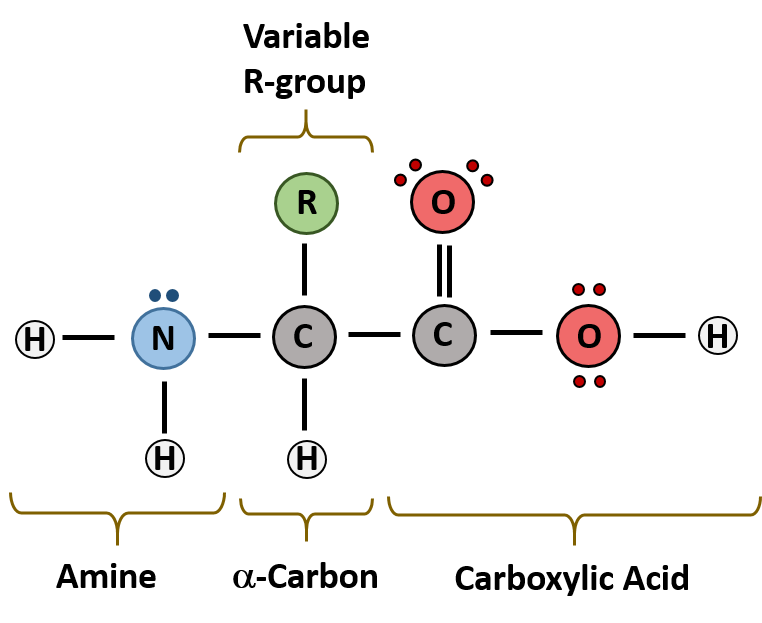

Many amino acids joined by peptide bonds form a polypeptide. This bond is called a peptide bond and it is formed by a dehydration reaction, where a water molecule is removed.

The amino group of one amino acid will bond to the carboxyl group of the next amino acid. For example the amino acid Alanine has a methyl group at this position, whereas Glycine has a hydrogen atom. The R group (also known as a side chain) is different for each of the 20 amino acids. The title salt crystallises in the polar, piezoelectric P21 space group. The structure was determined using the single-crystal diffraction method. This carbon is covalently bonded to four different groups: an amino group, a carboxyl group, a hydrogen atom, and a variable group symbolised by R. The new crystal of amino acid based H(4Pyridyl)AlaOHBF4 was synthesized. There are 20 different amino acids, and they all share the same general structure. In the centre of the amino acid is an assymetric carbon atom called the alpha carbon. When looking at the coordinates, notice that, in this case, the structure starts at amino acid Arg 18 Amino acids from 1 to 17 are missing. The amino acids in a protein are bonded to each other with peptide bonds - hence the term for a polymer of amino acids is a polypeptide. However, all these proteins are constructed from the same set of 20 amino acids, linked together in polymers. There are thousands of different proteins with diverse functions: storage, transport, structural support, cellular communication, enzymes and hormones. Proteins are made up of organic molecules called amino acids.


 0 kommentar(er)
0 kommentar(er)
